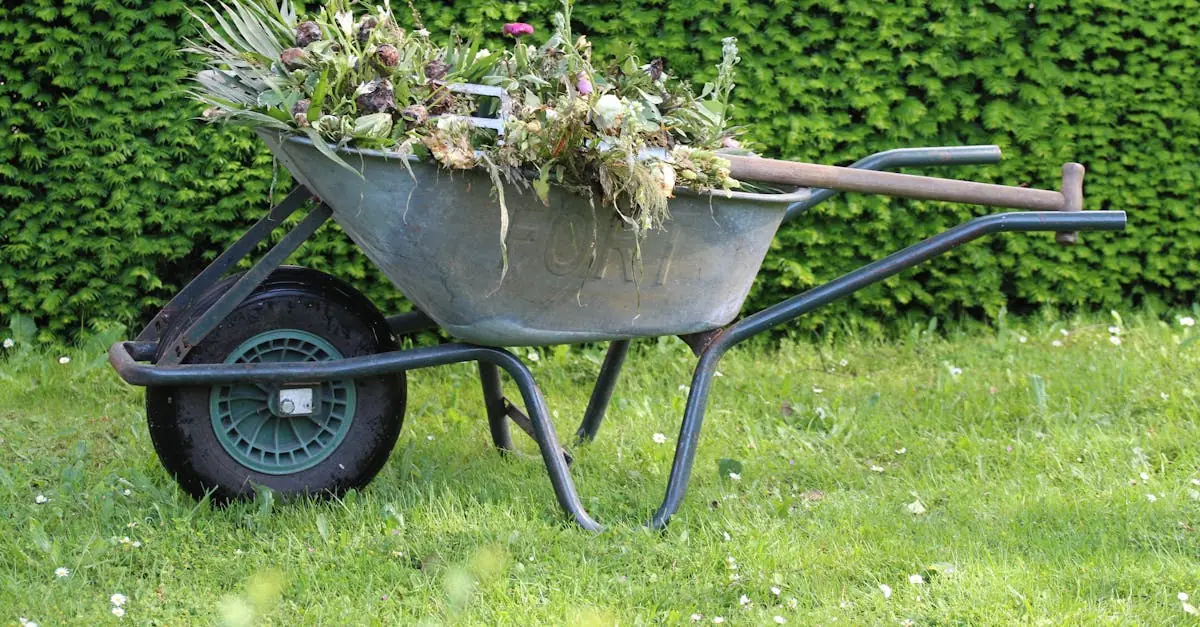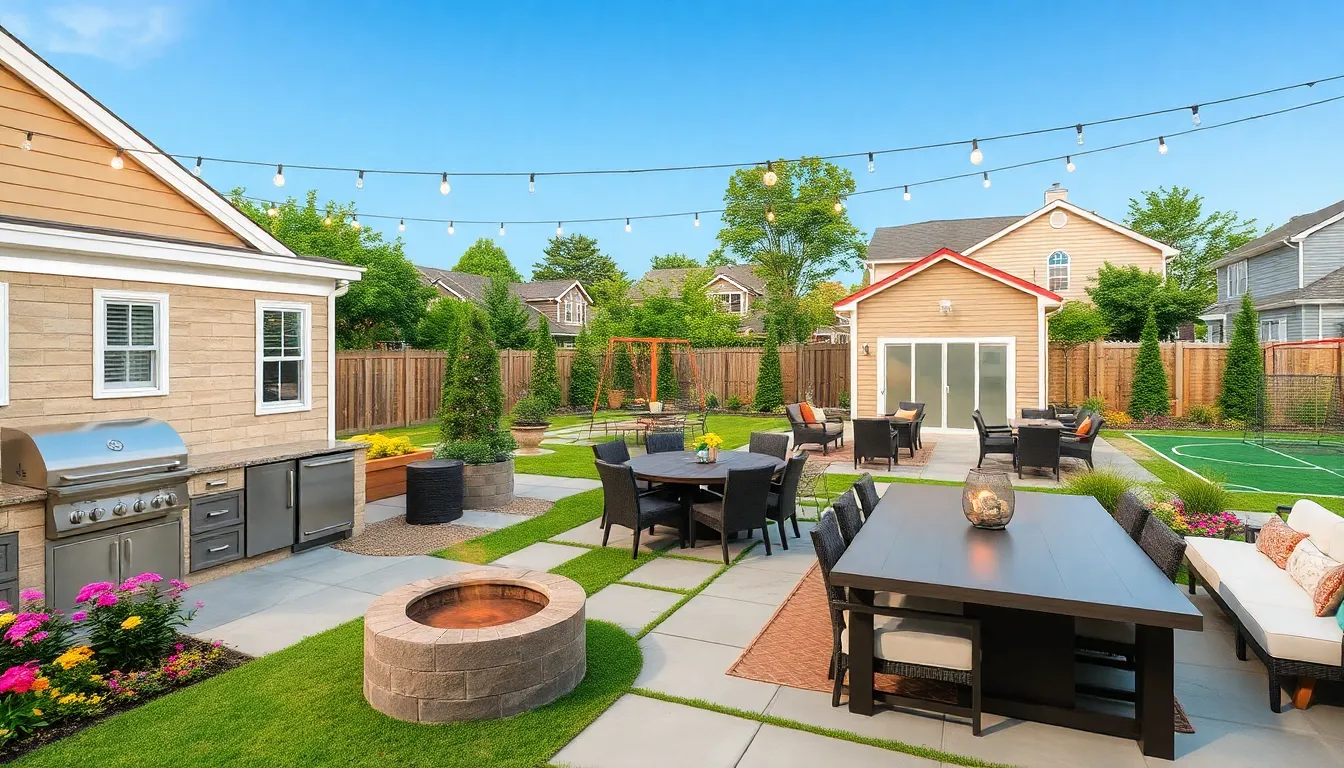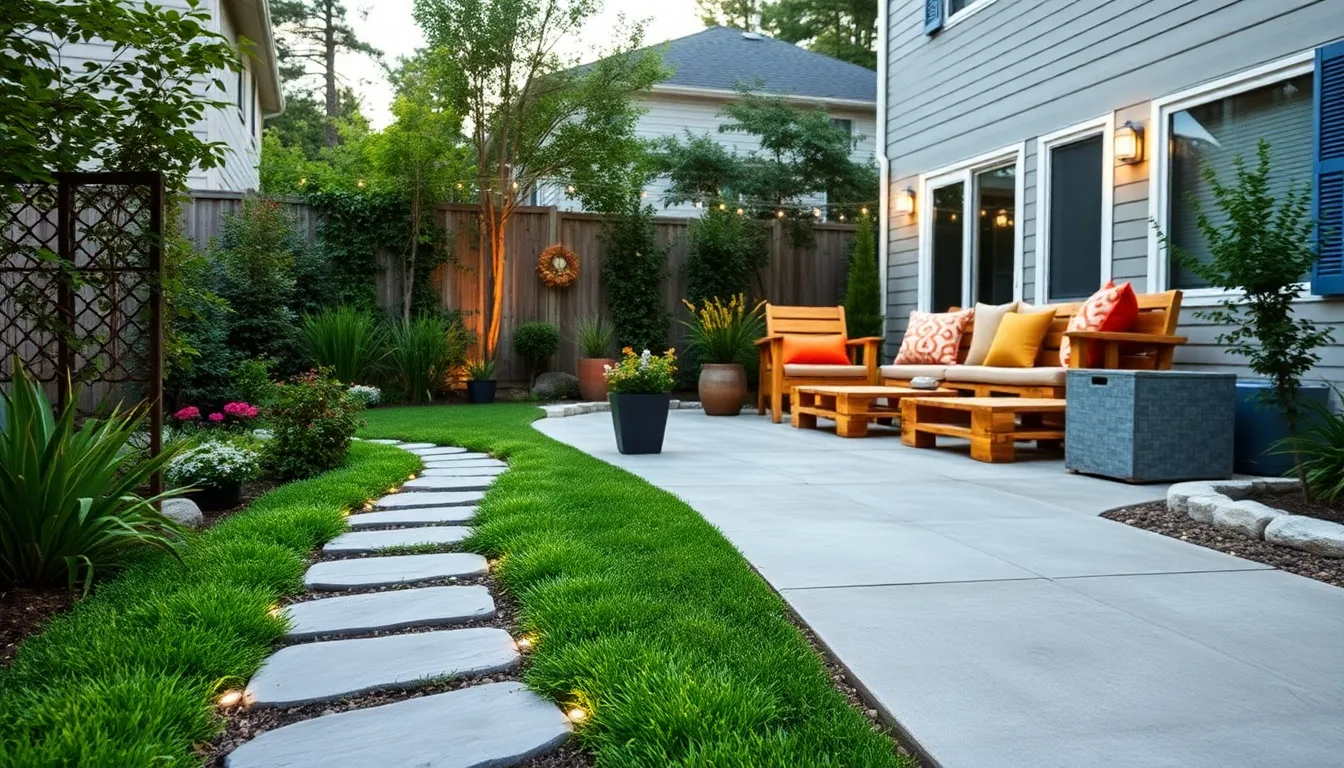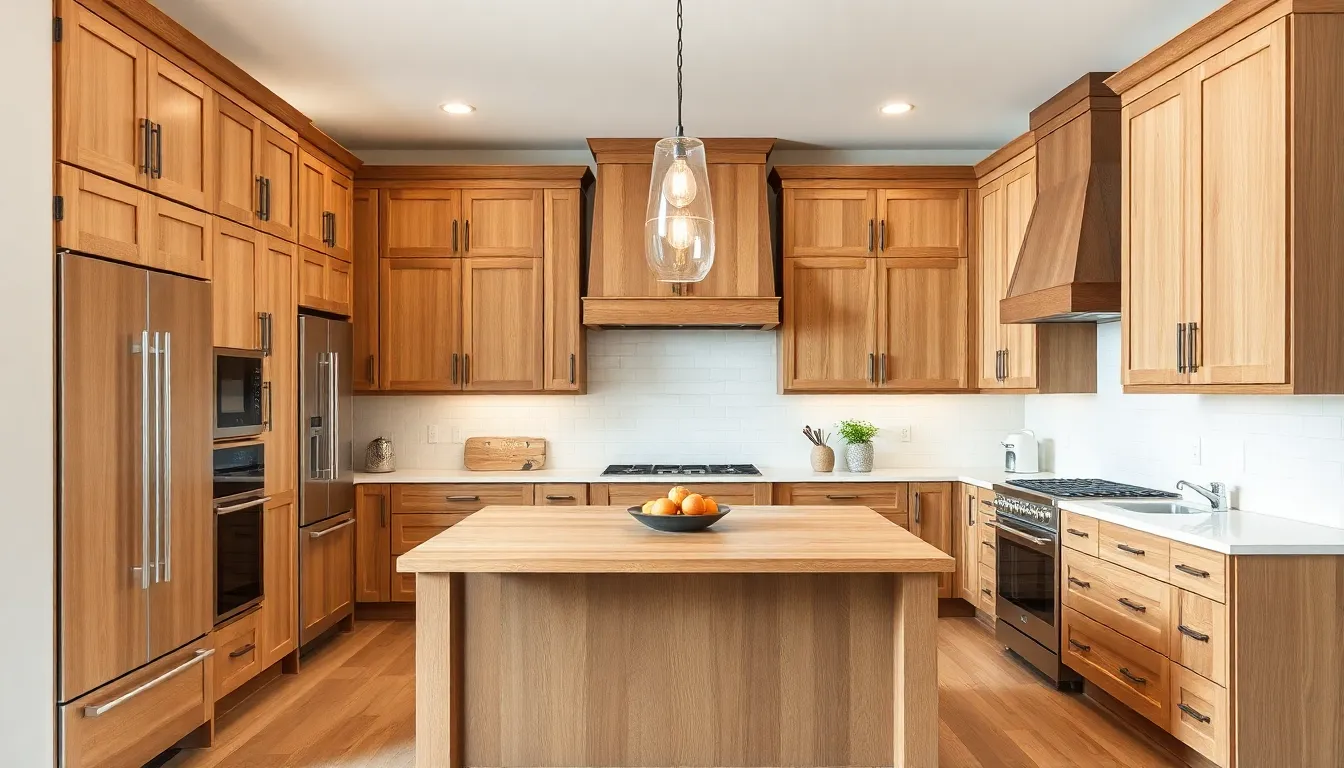Table of Contents
ToggleImagine transforming your backyard into a magical kingdom where laughter echoes and imaginations soar. A DIY backyard playground isn’t just a fun project; it’s a ticket to endless adventures that keeps kids active and engaged. Why settle for a boring yard when you can create a vibrant space filled with slides, swings, and climbing walls?
Benefits Of A DIY Backyard Playground
A DIY backyard playground offers numerous advantages for families. Not only does it create an engaging environment, but it also provides essential benefits for children’s development.
Encouraging Physical Activity
Physical activity thrives in a backyard playground. Features like slides and swings motivate children to be active and improve their strength and coordination. Outdoor play increases cardiovascular health by encouraging children to run and climb. Research shows that active children have better focus and cognitive skills. Parents observe how regular playtime can help combat childhood obesity by replacing screen time with exercise. Ultimately, having a dedicated space for play allows kids to explore and discover while staying physically fit.
Fostering Creativity
Creativity blossoms in a DIY playground. Customizable elements inspire children to invent games and stories during playtime. Natural surroundings enhance imaginative thinking, as kids can incorporate their environment into creative activities. Building structures like forts or obstacle courses invites innovative designs that focus on problem-solving. Engaging with various materials and textures stimulates sensory development. Children learn through exploration, leading to self-expression and confidence in their ideas. A backyard playground becomes a canvas, encouraging limitless creativity and collaborative play among friends.
Planning Your DIY Backyard Playground
Planning a DIY backyard playground requires careful consideration of several factors. The right decisions ensure a space that is both fun and safe for children.
Choosing The Right Location
Choosing a suitable spot sets the foundation for a successful playground. Look for a level area away from obstacles like trees, fences, and water features. Opting for a space that receives sunlight promotes a welcoming environment. Consider proximity to the house for easy supervision during playtime. Safety should be a top priority, so avoid areas near busy roads or sharp drop-offs. Easy access can enhance enjoyment, allowing parents to join in the fun or intervene if necessary.
Assessing Available Space
Assessing the available space helps optimize playground design. Measure the yard to understand dimensions completely. Aim for at least 15 feet of clear space around play structures to allow safe movement. Establish a balance between equipment and open play areas for various activities. Include zones for swings, slides, and climbing walls while factoring in potential expansion. This approach accommodates future additions or changes, creating a flexible playground that adapts as children grow.
Essential Materials And Tools
Creating a DIY backyard playground requires specific materials and tools. Selecting the right items ensures a safe and enjoyable play space for children.
Recommended Play Equipment
Swing sets provide an entertaining and active option. Slides enhance the fun with thrilling rides down. Climbing frames encourage physical strength by promoting climbing skills. Sandboxes offer creative play opportunities for imaginative minds. Providing ample seating, picnic tables allow for breaks during playtime. Incorporating various equipment promotes a range of activities and engages children in outdoor fun.
Safety Features To Consider
Surfaces beneath play equipment require cushioning. Mulch, rubber mats, or grass cover help prevent injuries. Installing secure fencing keeps children safe from surrounding hazards. Consider incorporating safety rails on swings and slides to maintain stability. Regular maintenance checks on equipment prevent wear and tear. Ensuring adequate spacing between play structures reduces the chance of collisions. Prioritizing safety features creates a secure environment for children to explore.
Step-By-Step Construction Guide
Creating a DIY backyard playground involves strategic planning and a hands-on approach. Following these steps ensures a fun and safe environment for children.
Building The Structure
Begin by assembling the main play structure, which may include a swing set, slide, and climbing frame. Use pressure-treated wood for durability and resistance to weather. Ensure the foundation is stable; consider concrete footings for added security. Different elements enhance play, from fort-like structures to simple platforms. A leveled surface beneath ensures safety during play. Each component needs careful measurement for proper installation. Prioritize maintenance checks after construction, as regular inspections help identify wear.
Adding Accessories And Features
Integrating accessories enhances the playground experience. Install swings, ropes, and slides to vary play options. Consider adding a sandbox for creativity, fostering imaginative play among children. Install shade structures to protect kids from the sun while they play. Safety features like cushioned ground surfaces minimize injuries from falls. Clearing the surrounding area prevents entanglements with other objects. Regularly update equipment to maintain interest and safety, ensuring continuous engagement.
Maintenance Tips For Longevity
Maintaining a DIY backyard playground ensures both safety and longevity for years of fun. Focus on regular inspections and weatherproofing solutions to enhance durability.
Regular Safety Inspections
Conduct regular safety inspections to ensure the playground remains safe for children. Inspect all equipment, looking for loose bolts or cracked materials. Pay attention to the surfaces, checking for wear, and ensuring no sharp edges are exposed. Inspect playground structures after heavy use or adverse weather to address any issues promptly. Consistently checking safety features contributes to a secure play environment. Remember, engaging children in play requires vigilance in maintenance.
Weatherproofing Recommendations
Implement weatherproofing strategies to protect equipment from the elements. Seal wooden structures with outdoor-rated stains or paints to prevent rot and degradation. Utilize covers for benches and swings during extreme weather to extend equipment life. Store removable items in a dry and sheltered area during winter months to avoid damage. Installing drainage solutions helps prevent water accumulation, reducing potential hazards. Taking these steps preserves play materials and enhances the long-term enjoyment of the backyard playground.
Creating a DIY backyard playground is a rewarding project that brings joy and adventure to children while enhancing family bonding. With thoughtful planning and attention to safety, parents can craft a vibrant space that encourages physical activity and sparks creativity. Regular maintenance ensures the playground remains a safe haven for exploration and play.
By investing time and effort into this project, families can transform their outdoor areas into lively environments where children can thrive. Embracing the DIY approach not only fosters imaginative play but also creates lasting memories. A backyard playground becomes more than just equipment; it’s a canvas for adventure and growth.





